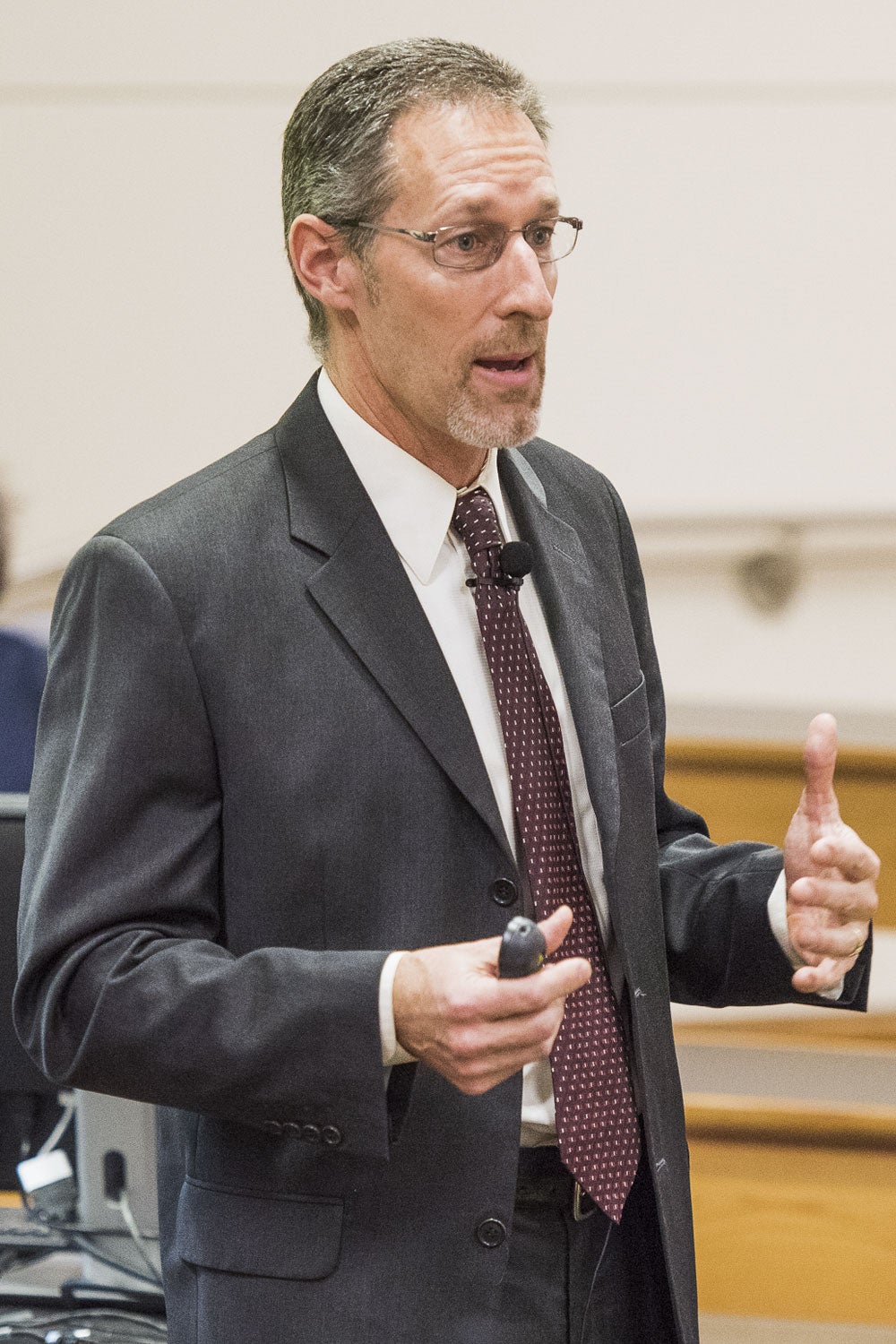As part of continuing efforts to prepare the campus community to confront emergency situations, the Department of Public Safety has created a new training video that describes how to react to an active shooter scenario. Stanford Chief of Public Safety Laura Wilson and Emergency Manager Keith Perry answer questions about responding to emergencies on campus.

Laura Wilson is director of the Department of Public Safety, which has issued a new safety training video for the Stanford community. (Image credit: L.A. Cicero)
How should people prepare for an emergency on campus?
Wilson: None of us thinks this is going to happen to us, but we need to have the mindset of “what if?” What if there were an earthquake or a fire? What if there were an active shooter? No matter what type of emergency situation, the important thing is to know where your exit points are and to have a plan.
Perry: The university has many plans and resources in place to keep the campus community safe. There is a faculty-staff emergency guide online, and people should familiarize themselves with the content there. It applies to many possible emergencies on campus.
What actions should individuals be prepared to take if confronted with, for instance, an active shooter?
Wilson: If there were an active shooter and you can escape, do so. Put distance between you and the threat. If you cannot safely escape, then hide – including putting heavy or solid objects between you and a potential threat. If you are hiding, remaining quiet and silencing cell phones are important. As a last resort, if you believe you or those around you are in immediate jeopardy, you can make the personal decision to fight to try to disarm or prevent an attacker from harming others. The three words to remember are run, hide, fight. The Stanford Department of Public Safety has developed a training video that illustrates these concepts. It is also critically important that people follow any directions that police give to them because specific situations can call for different prevention and safety measures.

Keith Perry is university emergency manager in the Department of Environmental Health and Safety. (Image credit: L.A. Cicero)
What are the protocols for responding to an emergency, especially when a lockdown is invoked?
Perry: There are two main protocols we have for responding to an emergency. One is to evacuate, and one is to shelter in place. People need to understand how both of those would be implemented in their local area. Where would they go and what would they do under each scenario?
Wilson: Upon learning of a threat such as an active shooter, first responders will be focused on stopping the threat and then providing assistance to those who may be injured. The university will send out an AlertSU with general guidance as to what to do. I want to emphasize again that individuals must make decisions for themselves as to what action to take. Remove yourself from the danger if you can. If you cannot, then take steps to protect yourself from harm. Individuals will have to make decisions based on their circumstances. General guidance to the entire campus community may be different from someone who is in the immediate vicinity who could escape.
How will the university let me know there is a threat?
Wilson: We will use the AlertSU system to send a text and email. In the future, we will have the ability to send information via campus VoIP phones that can function as speakers to make public announcements. These incidents typically happen very quickly, and the immediate danger could be over before an AlertSU can be sent, which is why it is so important that people have a plan in advance and have a mindset about what they would do.
We would be updating emergency.stanford.edu. People will want to go to that website for information and directions in any campus emergency. All communication will be updated there.
Perry: Faculty, staff and students need to make sure they are registered for AlertSU and that all of their numbers and contact information in StanfordYou, their directory and AlertSU emergency contacts are current so that they can make sure they are receiving emergency notices from the university. As the chief mentioned, though, the people in the immediate vicinity will be the first to become aware of a threat. They will need to make their own decisions about whether to run, hide or fight based on what they see and hear in their immediate vicinity well before any alert can be issued by the university. People need to be prepared to act based on their best judgment and training without receiving external instructions.
What do you do if you are worried about the well-being of someone you know or work with, or you become aware of a threatening situation?
Perry: Be aware of people who are suffering from stress or other mental health issues and intervene early. We have a wide variety of resources available for help, and we have response teams trained to offer support to people in crisis. The most important part is to be sensitive to and aware of the behavior of those around you. Are they stressed? Has their behavior changed? Are they going through a tough time? It’s not that much more than just being a good friend. Offer assistance or just let them know that you care. Just avoid doing nothing. It’s so easy to assume that someone else will take care of it or that it’s none of my business. We all need to help be part of the solution. Let someone know if you have concerns.
Wilson: For situations in which there is an imminent concern about a person’s safety or the safety of others, notify your local law enforcement agency. If an immediate response isn’t needed, the university’s Threat Assessment Team can be reached via the email TAM4safety@stanford.edu. This team can assist with connecting individuals to the appropriate resources based upon the need, developing response plans and assessing potential threats. This team endeavors to manage concerns at the most appropriate level possible. In other words, I want people to feel comfortable using this team as a resource and not expect that sharing a concern with this team will result in a police response unless that is the level of response that is needed.
How can we get more information or training about what to do?
Wilson: The Stanford Department of Public Safety will provide training in the run, hide, fight response to anyone in the campus community upon request. To request the 45-minute training for your team or unit, call (650) 723-9633 or email community-outreach@lists.stanford.edu. The university’s threat assessment website is safety.stanford.edu.